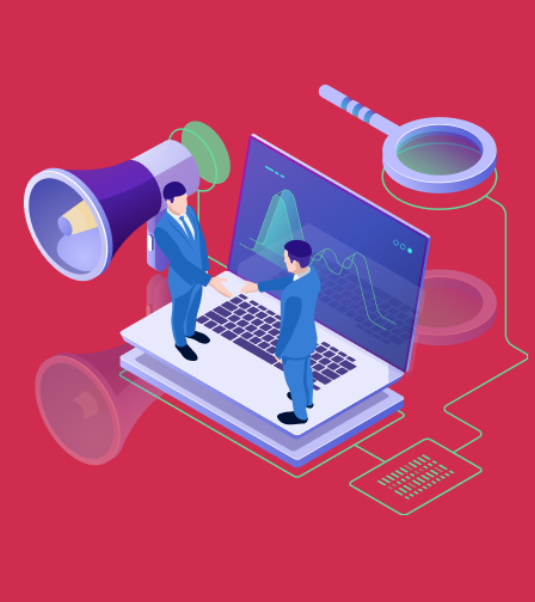Overcoming Growth Hurdles: Effective Strategies for Scaling B2B Tech
Scaling a B2B tech company comes with a unique set of challenges. From long sales cycles to unclear product positioning, growing a business in this space requires a strategic approach that goes beyond simply increasing budgets or expanding reach. The key to overcoming these obstacles lies in aligning your sales and marketing teams, optimizing your demand generation strategies, and embracing automation tools that help streamline operations and accelerate growth.
In this article, we’ll discuss how B2B tech companies can tackle common scaling challenges and implement strategies that foster sustained growth and a quicker sales cycle.
The Biggest Challenges in Scaling B2B SaaS Marketing
Scaling B2B SaaS marketing is not just about pushing out more content or increasing your advertising budget. It’s about navigating common roadblocks that, if left unaddressed, can stall growth and keep your business from reaching its full potential.
Long Sales Cycles
B2B tech sales cycles are notoriously long, often stretching anywhere from 9 to 12 months. This extended timeline can put pressure on both your marketing and sales teams, making it difficult to maintain momentum. Sales cycles in B2B tech require thoughtful approaches to nurture leads and move them through the decision-making process efficiently.
Differentiation: Nice-to-Have vs. Must-Have Positioning
For many B2B tech companies, the struggle lies in clearly differentiating their product and positioning it as a must-have solution rather than just a nice-to-have. It’s essential to demonstrate the return on investment (ROI) in a way that resonates with decision-makers and accelerates urgency.
Misalignment Between Marketing and Sales
Misalignment between marketing and sales is a common barrier to growth. When these teams aren’t working in sync, lead nurturing becomes inconsistent, and win rates can be compromised. Companies that manage to align their sales and marketing teams tend to experience higher sales success rates and faster revenue growth.
Scaling Demand Generation
Many B2B companies struggle to generate leads at scale, particularly when resources are limited or tools and processes are ineffective. A lack of well-defined outbound strategies and content that speaks to various buyer personas can severely hinder lead generation efforts.
Content and Buyer Enablement Gaps
Effective content tailored to different buyer personas is critical. Many B2B tech companies underinvest in content that resonates with both technical staff and executives, leaving a gap in how well they engage and empower their buyers.
Strategies to Accelerate the Sales Cycle in B2B Tech
Speeding up the sales cycle should be a top priority for B2B tech companies aiming for faster revenue growth. Here are five proven strategies to help you close deals faster and maintain your competitive edge:
Refine Sales Processes and Messaging
A faster sales cycle starts with sharpening your sales processes and refining your messaging. Position your product as an essential solution to create urgency, pushing leads from consideration to decision-making stages more quickly.
Leverage Sales Enablement Tools
Sales enablement tools like Gong provide valuable insights into customer interactions, enabling your sales team to refine their approach and close deals faster. Equipping your sales team with the right tools enhances engagement and streamlines the sales process.
Invest in Team Training and Development
Sales training is essential for empowering your team to navigate complex sales cycles. Regular training on objection handling, negotiations, and the use of CRM systems will allow your team to respond more effectively and close deals with greater confidence.
Focus on High-Impact Activities
By prioritizing high-impact activities such as engaging with decision-makers and nurturing warm leads, your team can reduce distractions and focus on efforts that lead to higher returns, thus accelerating the sales cycle.
Utilize AI to Enhance Sales
AI can automate repetitive tasks, offer data-driven insights, and personalize interactions with customers. With 81% of sales teams already investing in AI, leveraging this technology to streamline processes and enhance customer engagement is essential for improving the sales cycle.
Supporting Your Sales Team for Better Collaboration and Efficiency
Collaboration between marketing and sales is key to unlocking growth potential in B2B tech. Here’s how you can better support your sales team to ensure they have the tools and resources needed to succeed.
Improve Marketing and Sales Alignment
Effective collaboration between marketing and sales ensures a smooth lead nurturing process. Aligning these teams helps with faster response times, improved lead qualification, and better conversion rates.
Invest in Technology
CRM systems and sales enablement tools help improve efficiency by streamlining workflows, automating repetitive tasks, and providing actionable insights. These tools make it easier for sales teams to engage with prospects and close deals faster.
Empower Sales with Data
Providing your sales team with valuable data insights about customer behavior, preferences, and trends allows them to tailor their approach to each prospect’s specific needs. These insights help sales reps engage effectively and close deals faster.
Build a Culture of Motivation
Encourage goal-setting and reward achievements to keep your sales team motivated. A motivated team is more likely to achieve targets and contribute to the overall success of the organization.
Creating Market Urgency: Turning Interest into Action
In the crowded B2B tech market, creating a sense of urgency is crucial for turning interest into commitment. Here’s how you can position your product as a must-have solution for your target audience:
Articulate Must-Have Positioning
Clearly define the unique value of your product and how it solves specific pain points. By demonstrating how your product delivers tangible benefits, you can create a sense of urgency and drive quicker decisions.
Align with Organizational Priorities
Understand how your solution aligns with your prospects’ broader organizational goals. This ensures that your product is positioned as an essential tool that addresses their most pressing challenges.
Establish Thought Leadership
Position your brand as an authority in your industry by sharing valuable insights, trends, and thought-provoking content. This builds credibility and increases the perceived value of your product, encouraging prospects to act quickly.
Streamline the Sales Process
Utilize personalized content and advanced analytics to accelerate your sales pipeline. By simplifying the buyer’s journey and equipping your sales team with the right resources, you can move prospects through the sales funnel faster.
Leverage Customer Evangelists
Customer evangelists are loyal advocates who can help promote your product through testimonials and word-of-mouth. Tap into this network to amplify your product’s value and build trust among new prospects.
Improving Buyer Enablement: Empowering Your Prospects
Buyer enablement is about making it easier for your prospects to make informed decisions. Here are key strategies to empower your prospects throughout their buying journey:
Tailor Content to Buyer Personas
Create content that speaks to different personas within the buyer group. From technical staff to executives, ensure your messaging addresses the specific concerns of each decision-maker.
Engage Executives Directly
C-level decision-makers are crucial in the buying process. Focus on building relationships with executives through personalized meetings and events. This helps increase executive engagement and drives successful sales outcomes.
Facilitate Consensus Within Organizations
Equip your internal champions with tools like case studies and ROI calculators. These resources help them build support within their organizations, overcoming objections and facilitating consensus around your solution.
Use Advanced Analytics for Insights
Analytics tools allow you to understand buyer behavior and preferences. Use these insights to personalize your communications and highlight the aspects of your product that are most relevant to each stakeholder.
Offer Interactive Demos and Trials
Interactive demos and trials help prospects experience your product firsthand, which accelerates decision-making. By allowing prospects to engage with your product, you build confidence and move them closer to a commitment.
Leveraging AI for Future-Proof B2B Growth
AI is revolutionizing how B2B companies approach marketing and sales. By using AI-driven tools for personalization, outbound prospecting, and lead nurturing, businesses can scale more efficiently and effectively.
AI can also automate repetitive tasks, allowing teams to focus on high-value activities, thus improving overall efficiency and growth. As AI continues to evolve, it will be essential for businesses to integrate these tools into their strategies to stay competitive and future-proof their operations.
Conclusion
Scaling a B2B tech company is no easy feat, but with the right strategies in place, you can overcome the common hurdles that slow growth. By aligning your sales and marketing teams, optimizing your sales cycle, and leveraging AI to automate processes, you can position your company for sustained success. With a focus on personalization, buyer enablement, and streamlined operations, B2B tech companies can turn interest into commitment and accelerate their growth in a competitive market.
Recent Posts
- How AI is Revolutionizing Architectural Design: A Look at Tools, Trends, and the Future
- Streamlining Cyber Risk Assessments Through Automation
- Understanding the Difference Between Blockchain and Distributed Ledger Technology
- Is Bitcoin Mining Still a Viable Venture in 2025?
- Exploring AI: Unveiling Possibilities, Challenges, and Future Implications


